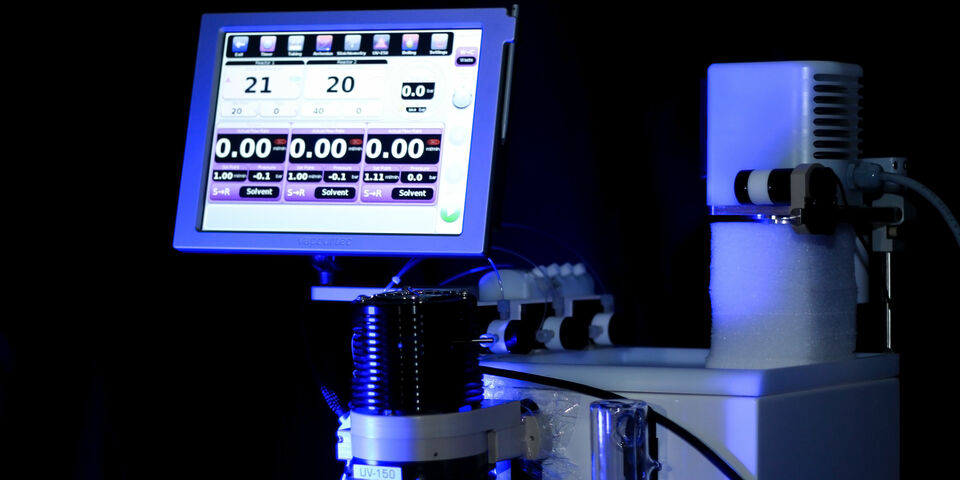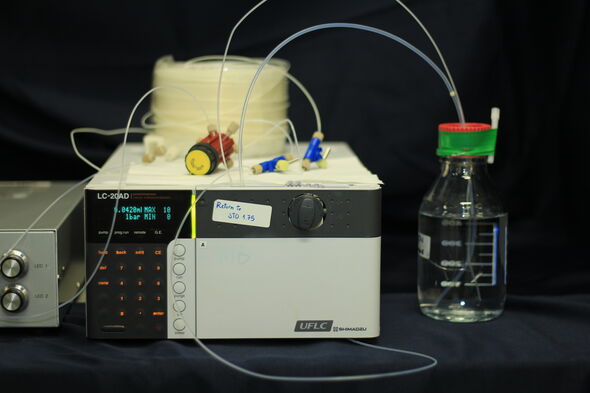Breakthrough in 'green' production of building blocks for medicines
Researchers at TU/e, led by associate professor Timothy Noël, have developed a new method for the immediate conversion of gaseous, low-weight hydrocarbons to building blocks for medicines. The process runs at room temperatures and low pressures by illuminating the molecules with light in the presence of a suitable catalyst. Notably, this new process is faster and leads to little or no material waste. This work has been published this week in the journal Science.
In industry, gaseous hydrocarbons, such as ethane and methane, are frequently changed into molecules that can act as building blocks for pharmaceuticals and agrochemicals. Current large-scale processes that activate these molecules for subsequent chemical reactions take place at high temperatures and pressures, which are harsh reaction conditions that can be difficult and expensive to maintain, while also leading to substantial waste generation. Also, for the specific case of methane, the high temperatures needed for activation negate the use of any resulting products in medicines as the organic molecules simply disintegrate.
A research team led by Timothy Noël from TU/e, in collaboration with researchers at the ShanghaiTech University (China), University of Pavia (Italy), and Vapourtec Ltd. (UK), have devised a new process for the activation of alkanes using light at room temperature and lower pressure.
“This is a significant breakthrough for converting alkanes into useful building blocks for medicines and materials for other industries,” says Noël. “Our approach allows for the immediate use of alkanes for more complex molecules without many unwanted by-products, while at the same time decreasing pollution and simplifying the activation process.”
To realize this new process, the researchers had to contend with two main issues. First, they needed a method that could easily sunder or break C-H bonds with a bond dissociation energy (BDE) between 96.5 and 105 kcal mol-1. The C-H bonds in methane are the most difficult to break. Second, the handling of gaseous alkanes requires tailor-made technologies that can bring the alkanes in close contact with a catalyst in a carefully monitored reaction environment. The researchers solved both of these issues by exciting the alkanes with UV light (about 365 nm) in the presence of a suitable catalyst at room temperature.
“The catalyst used is decatungstate. When illuminated, the catalyst becomes highly energetic and then has sufficient energy to split C-H bonds. We find that this works for methane, ethane, propane, and isobutane,” says Noël. He adds: “Our new approach is faster than traditional approaches, and we are excited to see how it develops. This study has employed microreactors given that they facilitate greater control over the reaction conditions, better confinement of the gaseous raw materials, and easier illumination of the catalyst. In the future, we will consider reactors that can allow higher production capacities.” This new method paves the way for the cheaper production of some medicines given that the cost of activating the gases for their production would be lower.



Discussion